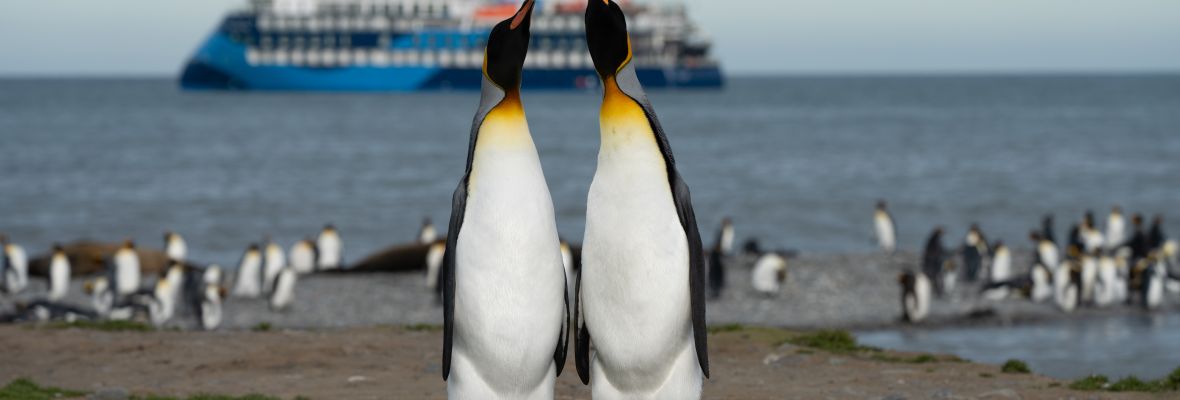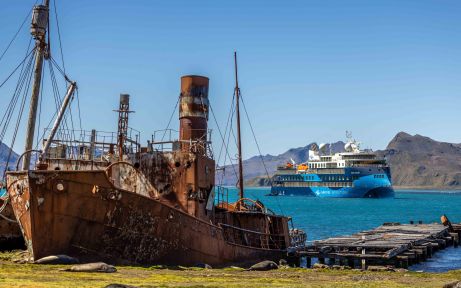Undoubtedly the most famous figure in the history of South Georgia is Sir Ernest Shackleton; he and the heroic story of the Imperial Trans-Antarctic Expedition have become synonymous with this remote island. South Georgia was the expedition's last stop en route to Antarctica during the ill-fated Imperial Trans-Antarctic Expedition in 1914. Shortly afterwards, the Endurance became trapped in the icy Weddell Sea. Shackleton hoped that the vessel would drift with the ice back to open water, however the ice conditions deteriorated, and the Endurance began to take on water, sinking under the ice in October 1915.
After the Endurance was crushed, Shackleton and his men set out across the ice, making first for Paulet Island, and then for any land they could. The party eventually reached Elephant Island, an inhospitable rock at the northern tip of the Antarctic peninsula. While nearby Deception Island held a whaling station from which help could be raised, the constant westerly winds and current made reaching it impossible. Therefore, Shackleton and five men set out to raise the alarm in the tiny lifeboat James Caird, aiming for South Georgia.
After 16 brutal days at sea in the Antarctic winter, the James Caird party arrived on the western shore of South Georgia on May 8th 1916. Shackleton, Worsley and Crean crossed the island with no mountaineering equipment in only 36 hours (a record which has never since been equalled), arriving at Stromness whaling station on 20th May 1916. From here, they journeyed to Chile, from where Shackleton (after several false starts) finally arranged rescue for his men from Elephant Island. All members of the expedition survived - the expedition itself was a spectacular failure, but the tale of endurance, strength and heroism remains one of history's greatest.
Shackleton himself died of a heart attack on his next visit to the island. While in Uruguay, the team escorting his body to England recieved a telegram from his wife, requesting he be buried on South Georgia. Shackleton is buried in the cemetery overlooking Grytviken and its numerous seals and penguins. Visitors to Grytviken may pay their respects there to this most legendary of explorers to this day.





